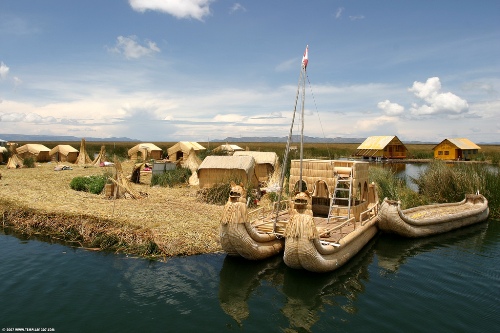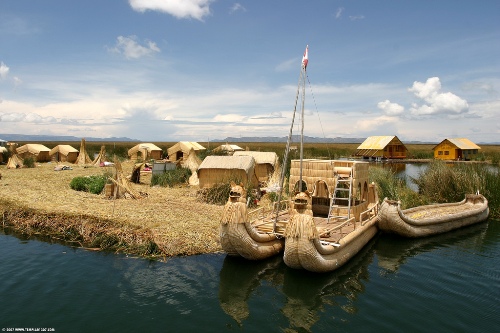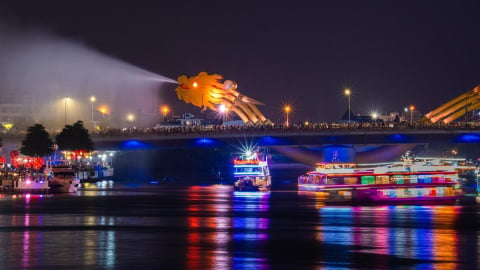The Uro people, who predate the Inca, comprise three groups: the Uru-Chipayas, Uru-Muratos, and Uru-Iruito. They live in families on more than 40 floating islands they have created on Lake Titicaca, the world’s highest navigable lake, located in the Altiplano, in the Andes Mountains on the border of Peru and Bolivia.
Scientists believe their first settlement was on the shores of Lake Titicaca in Bolivia, but the Uro floating village gradually moved towards the city of Puno, Peru.

Floating islands and reed houses on Lake Titicaca. Photo: Flickrcubamagica.
The Uro floating islands were not as close to the shore of Puno as they are today. They had spread their community to many sides of the Puno Bay. However, the water level of Lake Titicaca in the bay was too low, so they were forced to move closer to the shore, towards Estevez Island. Another group moved to the Huili River, one of the sources of Lake Titicaca, to ensure the depth of the floating islands below the surface of the island was 15m.
Using natural materials such as totoras, the Uro people have built for themselves artificial islands in the lake area near the city of Puno, southern Peru. When these totoras decompose, they will create gas, but cannot escape, and gradually the roots containing this gas will gather to form a floating island. Over time, the villagers also weave reeds into the roots to thicken and strengthen the surface of the island, preventing the floating islands from disintegrating. There are many reed houses built on the island, the Uro people need to weave more mattresses every 2 weeks to be able to withstand the waves of the lake.

Colorful hand-embroidered rugs of the Uro people. Photo: Flickr kampits.
Although still preserving and living with primitive traditional activities such as fishing, catching wild birds, making handicrafts..., the Uro people now know how to combine tourism services. The floating islands on Lake Titicaca are gradually becoming an attractive and unique destination for domestic and foreign tourists.
The Uro people introduce to tourists their colorful houses, handicrafts and sing their folk songs. Tourists are taken by boats made of reeds which the Uro call “Balsa de Totora”. Besides, they also use some modern items such as installing engines for boats, using solar panels to have electricity to run televisions, radios…
Today, tours to the Uro floating islands are often included in one-day tours to Taquile Island, or two-day tours to Amantani and Taquile Islands. These two islands promise to become the most attractive destinations for visitors to Lake Titicaca. It takes only 12 minutes by boat from the city of Puno to visit these unique floating islands. The Uro people are always open and friendly to visitors, and tourism has become a part of their life.
Source: VnExpress


































